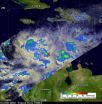(Press-News.org) Scientists at the Johns Hopkins Kimmel Cancer Center, University of Helsinki and Stanford University have developed a technique to keep normal and cancerous prostate tissue removed during surgery alive and functioning normally in the laboratory for up to a week.
The new technique could not only enhance research of prostate biology and cancer, but also hasten the creation of individualized medicines for prostate cancer patients, the investigators say. Previous attempts to culture live prostate tissues resulted in poor viability and lost "tissue architecture," the researchers note, making them less than useful for research or therapy development.
"Our technique could help scientists more accurately predict how living prostate tissues respond to therapy," says Marikki Laiho, M.D., Ph.D., director of the division of Molecular Radiation Sciences at Johns Hopkins. "It holds promise for testing anticancer drugs that work best."
For the study, published in the November 1 issue of Cancer Research, the scientists refined their multistep tissue culture technique and performed experiments to test the tissues' viability and utility in research. Laiho worked with Stanford University researcher Donna Peehl, Ph.D., to pilot the technique in a research project completed in 2007.
Customarily, pathologists store tissue samples in paraffin wax, which kills the tissue, resulting in samples that are essentially frozen in time. In many research laboratories, scientists experiment with prostate cancer cells that have been grown in flasks filled with nutrients and kept under strict temperature conditions. But these cells are not connected together in the tightly knit architecture of tissue that exists in the actual prostate gland.
"Tissue architecture may hold clues to why certain therapies work and others fail, and may be a better model of the intact, in vivo prostate gland," says Laiho, who is the Willard and Lillian Hackerman Professor of Radiation Oncology at Johns Hopkins.
Laiho says that one key to success for the international team was to work with surgeons and pathologists to speed up delivery of tissue samples to the pathology lab from the operating room.
At the pathology lab, scientists cut thin slices of prostate specimens taken from 18 patients who had undergone surgery on the prostate gland at the Helsinki University Central Hospital or The Johns Hopkins Hospital during 2007-2009.
Specimen slices had to be a precise thickness to allow cells throughout the tissue to maintain a healthy exchange of gases and growth factors.
Then, Laiho and her team placed the tissues in a liquid solution comprised of a complex mix of 64 separate ingredients to maintain the proper chemical and nutritional support for the biological functions in the tissue.
The scientists validated the presence of biomarkers specific for each type of cell within the prostate tissues to ensure that they were viable.
The scientists caution that although their method gives them a more "real-life" model of the prostate with live tissue samples, it comes at a cost: – even with support, the tissues are short-lived, and experiments on fresh specimens must be completed within one week, which may be too short for some types of research.
The Hopkins-Helsinki team has already used their tissue-culture technique to measure levels of proteins known to repair DNA damage caused by carcinogens and other environmental agents. They found that one of these proteins – p53 – is not activated consistently enough to repair DNA damage. They also found that one of the first proteins to arrive on the DNA repair scene – H2AX – is activated at expected levels in all but one of the architectural compartments in prostate tissue. Low levels of H2AX were found in the so-called "luminal" compartment of prostate tissue, in the part of the prostate gland that produces secretions to protect sperm cells.
Laiho says the tissue-culture technique was a key component of understanding which DNA repair proteins may or may not be activated in different parts of prostate tissue and could help scientists develop therapies that target these DNA repair proteins.
The Hopkins and Helsinki investigators plan to use their new tissue-culture technique to test the response of experimental drugs on prostate cancer tissues.
INFORMATION:
Funding for the study was provided by the Academy of Finland, Patrick C. Walsh Prostate Cancer Research Fund, K. Albin Johansson Foundation, Biomedicum Helsinki Foundation, Finnish-Norwegian Medical Foundation, Finnish Medical Foundation and Helsinki Biomedical Graduate School.
Scientists contributing to the research included Sari Jäämaa, Taija M. af Hällström, Anna Sankila, Ville Rantanen, Hannu Koistinen, Ulf-Håkan Stenman from the University of Helsinki, Finland; Zhewei Zhang, Zhiming Yang, and Angelo De Marzo from Johns Hopkins; Kimmo Taari and Mirja Ruutu from the Helsinki University Central Hospital; and Leif C. Andersson from the University of Helsinki and the Karolinska Institutet in Sweden.
On the Web:
www.hopkinskimmelcancercenter.org
Scientists develop method to keep surgically-removed prostate tissue alive and 'working' for week
2010-11-04
ELSE PRESS RELEASES FROM THIS DATE:
Rice U. study looks at marketing benefits, pitfalls of customer-satisfaction surveys
2010-11-04
Though designed to enhance customer experiences, post-service customer surveys might actually harm a business's relationships with consumers, according to new research by Rice University professors. The research team found that customers who participate in firm-sponsored surveys delay doing repeat business with that company.
The study finds companies that use immediate follow-up customer surveys or multiple follow-up surveys may open themselves to negative consequences because customers who were satisfied with the specific service they received may jump to the conclusion ...
Multifocal contact lenses may reduce vision for night driving
2010-11-04
A new study suggests that older adults who wear multifocal contact lenses to correct problems with near vision, a very common condition that increases with age, may have greater difficulty driving at night than their counterparts who wear glasses. Age-related problems with near vision, medically termed presbyopia, usually occurs after the age of 40 and results in the inability to focus on objects up close.
According to an article published in Investigative Ophthalmology & Visual Science ("The Effect of Presbyopic Vision Corrections on Nighttime Driving Performance"), ...
University of Illinois researchers discover potential new virus in switchgrass
2010-11-04
University of Illinois researchers have confirmed the first report of a potential new virus belonging to the genus Marafivirus in switchgrass, a biomass crop being evaluated for commercial cellulosic ethanol production.
The virus is associated with mosaic and yellow streak symptoms on switchgrass leaves. This virus has the potential of reducing photosynthesis and decreasing biomass yield. Members of this genus have been known to cause severe yield losses in other crops. For example, Maize rayado fino virus (MRFV), a type member of the genus, has been reported to cause ...
Physics experiment finds violation of matter/antimatter symmetry
2010-11-04
ANN ARBOR, Mich.---The results of a high-profile Fermilab physics experiment involving a University of Michigan professor appear to confirm strange 20-year-old findings that poke holes in the standard model, suggesting the existence of a new elementary particle: a fourth flavor of neutrino.
The new results go further to describe a violation of a fundamental symmetry of the universe asserting that particles of antimatter behave in the same way as their matter counterparts.
Neutrinos are neutral elementary particles born in the radioactive decay of other particles. The ...
Yale journal explores new environmental applications of ICT
2010-11-04
New Haven, Conn. -- New applications of information and communication technology (ICT) that could save society significant amounts of energy and money and reduce greenhouse gas emissions that are warming the planet are explored in a special issue of Yale's Journal of Industrial Ecology.
These applications exploit recent advances in ICT, such as social networking and Web 2.0, smart energy monitoring and geographic information systems, and are explored in depth in the special issue "Environmental Applications of ICT," published with support from the Leading Edge Forum ...
NASA's TRMM satellite sees Tomas' power fluctuate
2010-11-04
The Tropical Rainfall Measuring Mission (TRMM) satellite traveled over Tomas twice on Tuesday, Nov. 2. The second time was at 2005 UTC (4:05 p.m. EDT) when it was still classified as a tropical storm. During TRMM's second overpass, Tomas' center of circulation wasn't evident. Today, Nov. 3 that center is reforming.
During the morning hours on Nov. 3, an Air Force hurricane hunter aircraft found no tropical storm force winds so Tomas was downgraded by the National Hurricane Center to a tropical depression.
At 2 p.m. EDT on Nov. 3, Tomas was undergoing some changes, and ...
What will Webb see? Supercomputer models yield sneak previews
2010-11-04
VIDEO:
Two spiral galaxies undergo a protracted crash lasting two billion years, eventually merging into a single elliptical galaxy.
Click here for more information.
As scientists and engineers work to make NASA's James Webb Space Telescope a reality, they find themselves wondering what new sights the largest space-based observatory ever constructed will reveal. With Webb, astronomers aim to catch planets in the making and identify the universe's first stars and galaxies, yet ...
Prostate cancer's multiple personalities revealed
2010-11-04
NEW YORK (Nov. 3, 2010) -- Scientists at Weill Cornell Medical College have taken an important step toward a better understanding of prostate cancer by uncovering evidence that it is not one disease, as previously believed, but rather several factors which can be measured and, in the future, destroyed by targeted therapy.
The research team led by of Dr. Mark A. Rubin, the Homer T. Hirst Professor of Oncology in Pathology and vice chair for experimental pathology at Weill Cornell Medical College, identified secondary mutations that cause some types of prostate cancer ...
Half of those travelling internationally not aware of potential health risks
2010-11-04
More than 30 million people in the United States travel to resource-limited areas of the world each year. This global mobility may contribute to the spread of infectious diseases – such as influenza, measles, and meningitis – and may also put individual travelers at risk for malaria, typhoid, dengue fever and hepatitis. Despite these potential risks, a recent study conducted by the Division of Infectious Diseases at Massachusetts General Hospital (MGH) and published in the Journal of Travel Medicine found that 46 percent of travelers to resource-limited countries did ...
New lymphoma therapy may be more effective with fewer side effects
2010-11-04
NEW YORK (Nov. 3, 2010) -- Diffuse large B-cell lymphoma (DLBCL) is a type of aggressive non-Hodgkin's lymphoma that accounts for approximately 40 percent of lymphomas among adults. If left untreated, it is fatal. The existing treatments have a cure rate that is slightly over 50 percent but destroy healthy cells along with the cancer cells.
Researchers at Weill Cornell Medical College have found a combination therapy that is more effective than traditional treatments and is able to kill the cancer cells without harm to surrounding tissues. In a paper published in the ...

